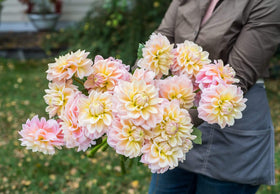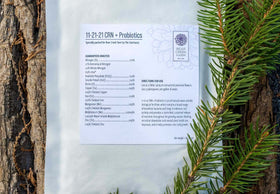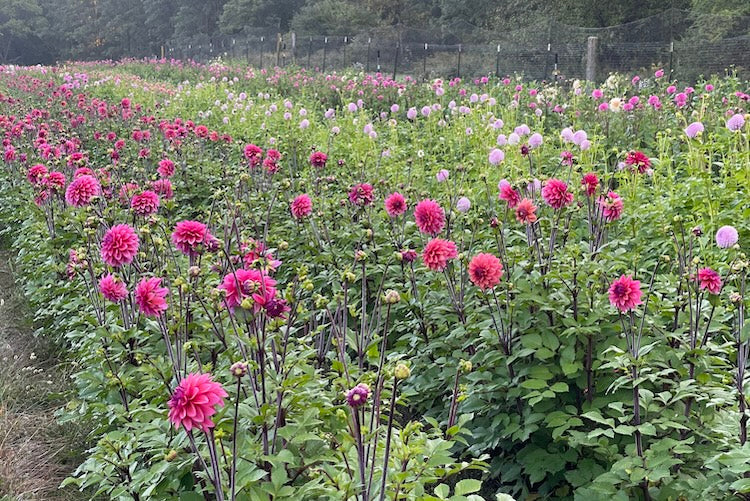The world of flower farming and gardening has been shaped by incredible teachers, many of whom are based on the West Coast, particularly in Washington State and Oregon. Their guidance has been instrumental in showing growers how to create thriving, abundant gardens. But if you’re on the East Coast and find that their advice doesn’t always yield the same results, you’re not alone—and you’re certainly not failing.
The truth is, growing flowers in the Northeast is fundamentally different from growing them in the Northwest. The first distinction is in the soil. While Washington and Oregon have volcanic soils. In general, these soils tend to be deep and mineral-rich, shaped by millennia of geologic activity. In contrast, Northeast soils sit atop limestone bedrock. This means drainage, aeration, and nutrient balance are different from what West Coast growers experience. A tool recommended by a grower in Washington—perhaps a broadfork designed for fluffy, deep soil—might snap in half when met with the unyielding density of our clay or rock-laden fields.
Nutrient composition also plays a role. Northeast soils are naturally higher in nitrogen, which is fantastic for leafy growth but needs careful management for flower production. A composting approach that works beautifully in the Northwest, where nitrogen levels are more moderate, can leave an East Coast grower puzzled by why they have enormous green plants but few blooms. The plants are responding to their environment, prioritizing leaf and stem over flowers because the nitrogen tells them to. This doesn’t mean the method was bad advice—just that it must be adapted.
Then, of course, there’s climate. The Pacific Northwest enjoys relatively mild, wet conditions with fewer temperature extremes. The Northeast? We get it all—humid summers, frigid winters, erratic springs. Flowers here have to develop a kind of toughness that their West Coast counterparts may not need. This is why, for instance, dahlias grown in the Northeast often develop slightly thicker stems and stronger petals—they’ve had to contend with the shifting temperatures and moisture levels. If you’ve ever wondered why certain varieties seem more delicate in our region, it’s because they weren’t bred or adapted for these swings. In the heat of the southern regions, for example, some dahlias will lose their petals quickly due to excessive heat.
This is why learning from great teachers requires a second step: translation. Their wisdom is invaluable, but it has to be filtered through the lens of where you’re growing. If a planting technique, a tool, or a fertilization plan isn’t working, it’s not a reflection of your abilities. It’s a sign that your land is speaking, and you need to adjust accordingly.
Rather than feeling frustrated, embrace the process of discovery. Recognize that the flowers thriving in your garden have adapted in ways that make them uniquely suited to your climate and soil. When they bloom, it’s not just about beauty—it’s about resilience.
This season, we’ll be sharing surprising facts about regional flower-growing differences on Instagram, with a special focus on how flowers adapt to the challenges of the Northeast. If you’ve ever wondered why some advice just doesn’t seem to translate to your garden, or if you want to learn what works best in our region, be sure to follow along. Join us at @bearcreekfresh so you don’t miss out!





Thank you for writing this piece about different growing regions and the effect they have on dahlias. I am a very small dahlia grower (less than 500 dahlia plants – and some of those from your farm💚).
I moved to a new home/location on an island off coast of Maine, zone 5b/6 a year ago. Summer ‘24 was a big learning curve as I would expect in new location. One of the challenges has been the prevailing winds; southwest mostly summer, all year round, mostly northwest. We used to average 5-15mph, but over last few years averages are up 15-40mph, especially during dahlia blooming time ! It doesn’t mean we don’t have calm days, just more windy days. Reading your blog post made a light go off…plant bigger, wind resilient shrubs in the west/northwest/north area of dahlia patch higher up, closer to dahlias to provide more protection. This is just one piece of the puzzle. Observation is key. I am grateful for living close to an available resource of nutrients for the plants: washed up seaweed on the shore. So good for building soil and mulch.
Again, thank you.
Dear,
I think ís very important post about flower prodution!
I have a question:
What impacts change climate in flower production?
This is one of the best articles I have read and it’s so true and really done in a way that is empowering and helps shift our focus and creates a learning and flexibility that we need as gardeners. Thank you!